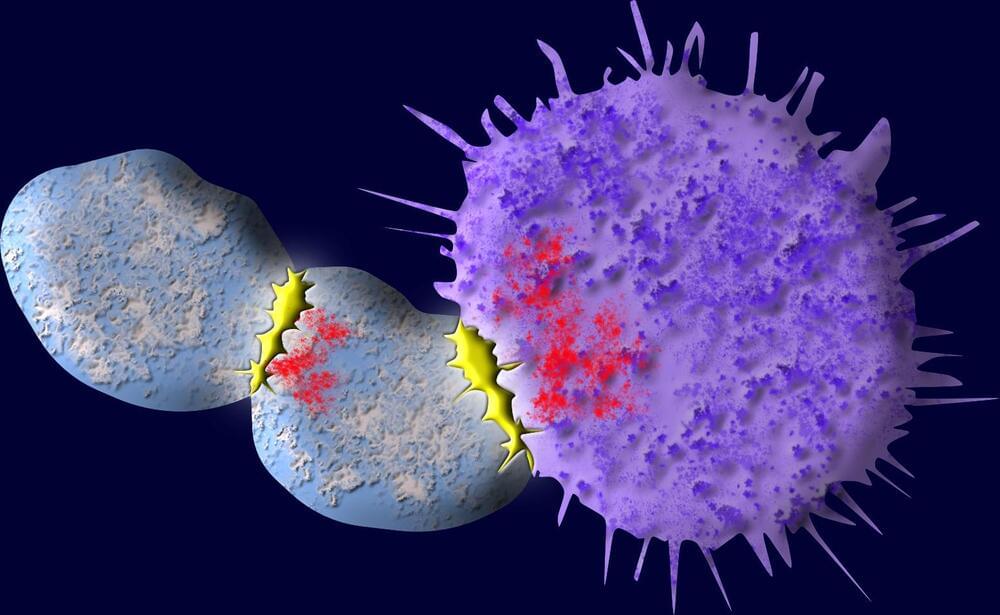Cancer can cause different, such as abnormal bumps, night sweats, or unexplained weight gain or loss. Only a doctor can tell if are caused by cancer or some other problem.



The STAR party’s vision for Canada includes the research and development of self sustainable Mobile Airborne Cities; or Airborne Arcologies. Being an obviously semi-long term goal, the objective would be to at first, allocate budgeting towards research and development of components to build this project in a phased manner… and the scaling of the project as technology allows for it.
Phase I: research and development of scalable micro-prototypes.
Phase II: multiple prototype development / testing stages.
Phase III: Final modifications, and testing of Finished Model.
Phase IV: aircity one digital-testing / infrastructure development.
Phase V: aircity production facility development.
Phase VI:… More

There’s a lot of talk about the potential for artificial intelligence in medicine, but few researchers have shown through well-designed clinical trials that it could be a boon for doctors, health care providers and patients.
Now, researchers at Stanford Medicine have conducted one such trial; they tested an artificial intelligence algorithm used to evaluate heart function. The algorithm, they found, improves evaluations of heart function from echocardiograms — movies of the beating heart, filmed with ultrasound waves, that show how efficiently it pumps blood.
“This blinded, randomized clinical trial is, to our knowledge, one of the first to evaluate the performance of an artificial intelligence algorithm in medicine. We showed that AI can help improve accuracy and speed of echocardiogram readings,” said James Zou, PhD, assistant professor of biomedical data science and co-senior author on the study. “This is important because heart disease is the leading cause of death in the world. There are over 10 million echocardiograms done each year in the U.S., and AI has the potential to add precision to how they are interpreted.”

NIH-funded study supports new role for nutrient found in fish, dietary supplements.
Omega-3 fatty acids, which are abundant in fish and fish oil supplements, appear promising for maintaining lung health, according to new evidence from a large, multi-faceted study in healthy adults supported by the National Institutes of Health. The study provides the strongest evidence to date of this association and underscores the importance of including omega-3 fatty acids in the diet, especially given that many Americans do not meet current guidelines. Funded largely by the National Heart, Lung, and Blood Institute (NHLBI), part of NIH, the study results were published in the American Journal of Respiratory and Critical Care Medicine.

The gut microbiota is a key player in multiple facets of human health, influencing disease development and prevention. An interdisciplinary collaboration is needed to unravel its complexities and to finding potential avenues for therapeutic interventions.
Explore the following trending articles in Frontiers in Cellular and Infection Microbiology and Frontiers in Gastroenterology.

CAR T-cell (chimeric antigen receptor) therapy, a promising form of immunotherapy, involves reprogramming the patient’s T cells to enhance their ability to identify and combat antigens on the surface of cancer cells.
However, this therapy, which is currently approved for the treatment of leukemia and lymphoma, has a significant downside. During the process of destroying cancer cells, many of the engineered T cells get contaminated with residual cancer antigens, leading them to attack fellow T cells. This eventually results in a decrease in the body’s population of cancer-fighting cells, opening the door for a recurrence of cancer.
A new Yale study, however, has identified a way to tame the self-destructive tendencies of these killer T cells. Simply fusing a molecular tail onto the engineered T cells used in therapy, researchers say, can inhibit their proclivity to attack each other. The study was published July 27 in the journal Nature Immunology.

Could this be the future of medicine?
In order for chatbots to be useful to doctors and other health professionals, they are going to need access to the latest research. But current models simply don’t have access to data beyond their latest update. Daniel Nadler has been working to resolve this issue with his new startup OpenEvidence.
He plans to achieve his lofty goal by “marrying these language models with a real-time firehose of clinical documents,” Nadler told Forbes on Thursday. He claims that his new model “can answer with an open book, as opposed to a closed book.”

Science: In my opinion the main cause of aging is the accumulation of mutations in DNA 🧬 more than telomere size reduction or “toxin’s”. But the control of these “toxins” together with drug’s that simulate the restriction of calories and the transfusion of blood from young people to old people. And future drugs to make the telomeres grow again.
These four treatments together maybe can promote life extension. I am also enthusiastic in regenerative treatment with stem cells and “replace” old organs by new one’s growing in lab from stem cells. However I believe that immortality only when you make the enzymes “fix” in 100% the mutations caused by radicals.
High levels of toxic chemicals in the body, such as formaldehyde, which is best known as an embalming agent, have recently been found to be naturally made by cells and also to cause ageing.
Leading scientists from Cornell University, the University of Oxford, the University of Cambridge and Cancer Research UK are trying to understand what causes the body to overproduce formaldehyde.
It is hoped that drugs may be able to lower levels of it in the body and reverse the ageing process.
Recent developments in various domains have led to a growing interest in the potential of artificial intelligence to enhance our lives and environments. In particular, the application of artificial intelligence in the management of complex human diseases, such as cancer, has garnered significant attention. The evolution of artificial intelligence is thought to be influenced by multiple factors, including human intervention and environmental factors. Similarly, tumors, being heterogeneous and complex diseases, continue to evolve due to changes in the physical, chemical, and biological environment. Additionally, the concept of cellular intelligence within biological systems has been recognized as a potential attribute of biological entities. Therefore, it is plausible that the tumor intelligence present in cancer cells of affected individuals could undergo super-evolution due to changes in the pro-tumor environment. Thus, a comparative analysis of the evolution of artificial intelligence and super-complex tumor intelligence could yield valuable insights to develop better artificial intelligence-based tools for cancer management.
Tumor evolution refers to the changes that occur in a cancerous tumor over time as it grows and spreads (Hanahan and Weinberg, 2011; Lyssiotis and Kimmelman, 2017). These changes are the result of genetic mutations and changes in gene expression that can give rise to new subpopulations of cells within the tumor (Lyssiotis and Kimmelman, 2017; Balaparya and De, 2018). Over time, these subpopulations may accumulate subsequent mutations that confer enhanced survival and heightened proliferative capacity, thereby culminating in the emergence of a more formidable tumor exhibiting either heightened aggressiveness or treatment resistance (Balaparya and De, 2018; Gui and Bivona, 2022; Shin and Cho, 2023). Tumor evolution can have important implications for cancer diagnosis and treatment.

The U.S Food and Drug Administration (FDA) has approved a new drug combination for men with metastatic, castration-resistant prostate cancer (mCRPC) and certain DNA repair gene mutations, widening treatment options for this large patient population.
The androgen-receptor inhibitor enzalutamide plus the PARP inhibitor talazoparib can now be used as first-line treatment for mCRPC patients who have homologous recombination repair (HRR) gene alterations.
#MetastaticProstateCancer.
A new combination therapy for for metastatic prostate cancer that includes an already approved breast cancer drug was just approved by the FDA last month on June 20. It has many excited.
The FDA has approved a new drug combination therapy for metastatic castration-resistant prostate cancer and DNA repair gene mutations.